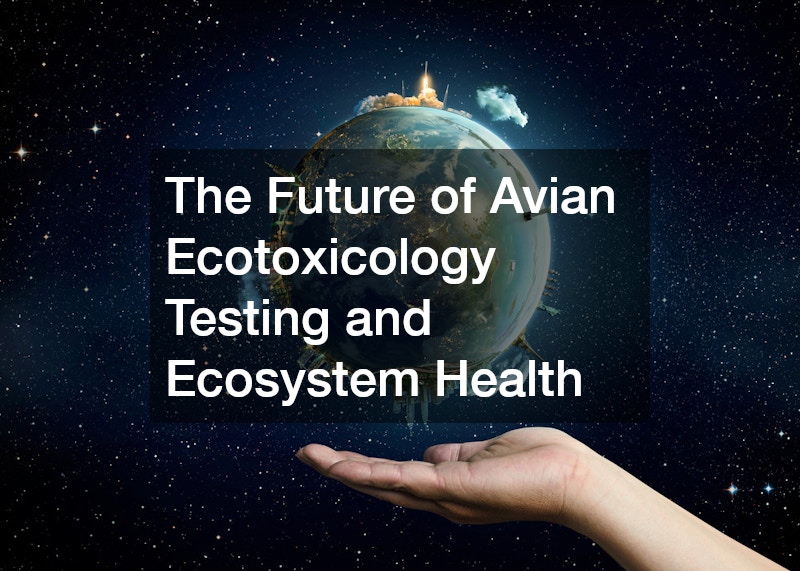Avian ecotoxicology testing plays a crucial role in understanding and safeguarding ecosystem health. As birds are sensitive indicators of environmental change, studying the impacts of contaminants on their health provides vital information. This type of testing evaluates how toxic substances affect bird species and, by extension, the broader ecological networks they inhabit.
By studying these effects, scientists and conservationists gain insights into the health of ecosystems and can make informed decisions on environmental protection measures. The importance of avian ecotoxicology testing cannot be overstated, as it aids in diagnosing and addressing both acute and chronic environmental hazards.
The Role of Birds in Ecosystem Monitoring
Birds occupy a unique position in ecosystems, making them ideal for monitoring environmental health. As they often feed at various trophic levels and migrate across continents, changes in bird populations can signal imbalances in ecosystem dynamics. Their sensitivity to environmental pollutants is particularly useful; when contaminants increase, bird populations often respond rapidly. This immediate response aids scientists in recognizing and mitigating ecological issues promptly. By studying avian health, we can gain early warnings of broader ecosystem disturbances.
Historically, birds have been among the first species to show signs of environmental stress. For example, declining bird populations in the mid-20th century famously helped identify the dangers of DDT, a harmful pesticide. This discovery was pivotal in environmental science, leading to significant changes in policy and pesticide regulation. This case highlights how avian ecotoxicology can lead to substantial improvements in ecosystem management. Through careful observation of birds, researchers are able to track the trajectory of environmental threats over time.
The Mechanisms of Avian Ecotoxicology Testing
Avian ecotoxicology testing involves a range of methodologies to assess the impacts of environmental contaminants on bird species. Laboratory studies are typically conducted to understand the toxicity of substances under controlled conditions. These tests evaluate various parameters, including growth, reproduction, and mortality rates in birds exposed to pollutants. Field studies complement laboratory research by offering real-world insights into how toxins affect bird populations in their natural habitat. The combination of these approaches provides a comprehensive overview of the ecological risks posed by embedded toxins.
Bioassays, a critical component of avian ecotoxicology, assess how exposure to single or multiple contaminants affects biological processes. Evaluating these effects at different levels – from cellular functions to whole organism outcomes – helps identify potential ecological hazards. Researchers also employ advanced tools like biomarkers, which can indicate exposure levels and early signs of toxic stress in birds. Integrating these methods enables scientists to measure both direct and sublethal effects of toxicants, offering a more detailed risk assessment.
Advances in molecular techniques now permit an even deeper understanding of how pollutants affect birds at a genetic and biochemical level. Genomic and proteomic studies reveal how exposure alters gene expression and protein production, critical factors in organism’s health. Given these tools’ specificity, researchers can detect effects before they manifest in visible harm. These insights extend far beyond individual species, offering a window into the contaminant threats facing entire ecosystems. As a result, avian ecotoxicology testing is a vital element in environmental conservation and human health forecasting.
Challenges and Limitations of Avian Ecotoxicology Testing
Despite its many benefits, avian ecotoxicology testing faces several challenges and limitations. One significant issue is the variability in individual bird responses to contaminants, influenced by factors such as age, sex, and genetic background. This variability can complicate the interpretation of study results and the extrapolation of findings to populations. Furthermore, environmental settings are complex, and isolating the effects of single contaminants can be difficult amidst the myriad interacting factors. These complexities necessitate robust experimental designs and careful analysis.
Another challenge is the ethical and logistical considerations of testing on wild bird populations. Capturing, handling, and sampling wild birds must be managed carefully to minimize stress and maintain welfare standards. Moreover, field studies can be resource-intensive, requiring significant funding and manpower. These constraints limit the number and scope of studies that can be conducted simultaneously, posing challenges to comprehensive ecosystem monitoring. Addressing these logistical issues is crucial if avian ecotoxicology is to remain an effective tool for environmental assessment.
The Future of Avian Ecotoxicology Testing and Ecosystem Health
As ecosystems face increasing pressures from industrialization and climate change, the role of avian ecotoxicology testing will only grow in importance. Future advancements in technology, such as the use of remote sensing and AI-powered data analytics, offer promising avenues for enhancing testing efficiency and accuracy. By incorporating big data and machine learning, researchers can better model and predict the impacts of pollution on avian species and ecosystems. These innovations will allow for more effective, timely, and comprehensive monitoring.
Greater collaboration between scientists, policymakers, and industry stakeholders is also critical to advancing the field. By sharing data and research findings, stakeholders can collectively address global ecological challenges and implement standardized testing and monitoring protocols. Legislative support, underpinned by robust scientific evidence, can drive policy reforms essential for environmental protection. Such collaborations will be instrumental in refining avian ecotoxicology methods and applying them to emergent ecological threats.

